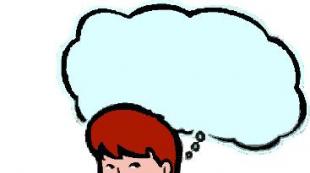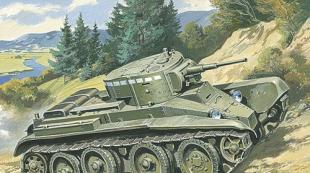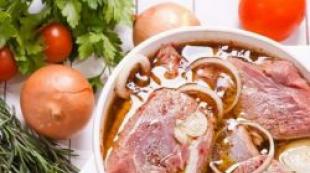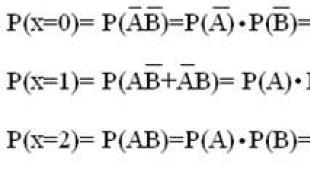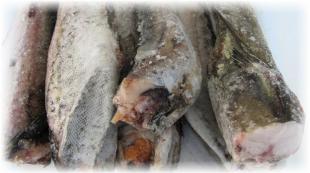What does dragon mean in China? Red dragons: description, legends The dragon is a symbol of power.
Probably every person knows such a magical creature as the Chinese dragon - the meaning of this symbol is very important for the entire Chinese nation. Many ancient interesting legends are associated with dragons, which people like to tell in our time.
In the article:
Chinese dragon - meaning of the symbol
Probably each of us is familiar with such a symbol as the dragon. He personifies the whole of China, the whole people, and when we say “descendants of the dragon,” everyone understands that we are talking about the Chinese. There is an opinion that this is a magical entity that is capable of descending into the deepest crevices at the bottom of the sea or rising as high into the skies as no one else can.
 The Chinese believe that dragons are the real messengers of ancient spirits or even deities. The emperors imagined themselves to be the true heirs of dragons, and the common people worshiped the magic, power and strength of these magical creatures. If we talk about what a dragon means in China, then a lot of things are associated with this symbol.
The Chinese believe that dragons are the real messengers of ancient spirits or even deities. The emperors imagined themselves to be the true heirs of dragons, and the common people worshiped the magic, power and strength of these magical creatures. If we talk about what a dragon means in China, then a lot of things are associated with this symbol.
In most cases, the appearance of this entity indicated some important news. There are many rituals that are associated with these mythological characters. For example, "Dancing with Dragons". This ritual has been carried out since the two hundred years BC. People believed that this way they could appease the dragon and ask the entity for happiness and prosperity.
What does the creature look like?
As is the case with any magical creatures, dragons were described differently in different countries (European, China, etc.). If we talk specifically about Chinese magical creatures, they were often attributed to the head of a camel, deer antlers, glowing demonic eyes, carp scales, chicken claws, tiger paws and cow ears.

But there are drawings in which these creatures are still depicted a little differently. There was one main detail that the dragon had to have. This is a special bump that was located on the head. It is believed that thanks to her, dragons can soar in the air without wings.
People believe that the size of the entities can range from 1 to 300 meters. Female dragons lay eggs, but it takes hundreds of years for the babies to hatch. Usually the birth of babies is accompanied by meteor showers, thunderstorms and hurricanes.
Dragon and Phoenix
Did you know that dragons are a symbol of good beginning - yang? That is why, since ancient times, it was believed that it goes well with, which is considered yin.
If you believe the teachings of Feng Shui, then the “Dragon and Phoenix” coin is an important attribute that every person should use. If you have a talisman of three such connected coins, then you will attract good luck into your life in the love and intimate sphere.
Types of Chinese dragons
Today, more than 100 types of dragon moons are known. They all have different names.
 Tianlong Shenlong
Tianlong Shenlong
Dilong  Fucanglong
Fucanglong
4 main types of dragons:
- Tianlong- This is a heavenly guard whose task is to monitor the palaces, support and protect the gods. It can fly and has five toes on each foot (while others have three or four);
- Shenlong- divine dragons are the patrons of thunder and know how to control the weather. Almost always these entities were drawn with a human head. They can fly, blend into the blue sky, and are therefore often invisible to the human eye;
- Dilong- earthly dragons capable of controlling bodies of water. It is believed that they hide in the depths of the sea in their luxurious apartments. The people who visited there received amazing gifts from magical entities. Such dragons most often come into contact with people. Often they take mortal women as wives and as a result appear half-human half-dragon;
- Fucanglong- underground guardians of treasures hiding wealth. Such entities live underground and possess untold wealth and are considered the wisest.
It is impossible not to mention the four brother Dragon Kings. Each of them is considered the master of one of the seas:
- Ao Guang commands the eastern ones;
- Ao Qin - lord of the southern sea;
- Ao Rhun - King of the West;
- Ao Shun is the ruler of the north.

Huizong or Zhao Ji - Eighth Emperor of the Song Dynasty
In addition, such mythical creatures can be classified by color. For example, the Song Emperor Huizong (1082-1135) canonized 5 dragon kings:
- lapis lazuli Qilong knew how to show compassion towards any living creature;
- scarlet zhulong- managed reservoirs;
- yellow Huanglong listened to every sufferer and gave what he needed;
- white Bailong personified virtue;
- black Xuanlong- a hidden dragon living in magical waters.
Chinese myths about dragons
Since the dragon is a very important symbol in Chinese culture, it is not surprising that there are many legends and myths associated with it. Some describe the assumption that most such entities influenced the formation and creation of this world.
 Did you know that the legend of the Great Flood even existed in China? It said that in ancient times there lived an emperor of heaven, who saw that there were a lot of evil people among people, and decided to punish them by sending heavy rain on them.
Did you know that the legend of the Great Flood even existed in China? It said that in ancient times there lived an emperor of heaven, who saw that there were a lot of evil people among people, and decided to punish them by sending heavy rain on them.
Incessant rainfall began, the rice fields were completely covered with water, and the roofs of the buildings collapsed from the strong weather. All reservoirs overflowed their banks, and the earth's surface was completely covered with water. It seemed that ordinary people had no chance to escape the disaster.
However, the young god took pity on the mortals and began to beg the emperor to allow him to save all people from certain death. The emperor himself realized that people had already been punished enough and something needed to be done. The young god summoned a huge turtle and a giant winged dragon, who helped him drain the earth and go to the people.
For 30 years they worked hard. After the effects of the Great Flood were neutralized, the three heroes again created plains, mountains, and fields. And where the dragon spent its tail, new river beds appeared. This is how the human race was saved from the flood.
 However, this is far from the only legend about such magical entities. For example, there is a myth about the dragon pearl. For a long time it was believed that this is a very powerful magical attribute. Everything that touches this pearl grows and multiplies. Dragons hid such pearls from people in the folds of skin under the chin or in the mouth. If you place such a jewel on the table at night, the light will illuminate the whole house.
However, this is far from the only legend about such magical entities. For example, there is a myth about the dragon pearl. For a long time it was believed that this is a very powerful magical attribute. Everything that touches this pearl grows and multiplies. Dragons hid such pearls from people in the folds of skin under the chin or in the mouth. If you place such a jewel on the table at night, the light will illuminate the whole house.
According to legend, in ancient times there lived a poor peasant woman and her son. Every day the boy went to the river to get water. On the way back, he stopped in a small clearing to collect herbs for his goat.
Over time, he noticed that the grass in this place was always green and fresh. The guy decided to collect sod and plant it in his garden. As soon as he lifted the turf, he saw a shining, beautiful pearl. The guy took it home and hid it in a jug of rice. The next day, the guy went out into the garden in the morning to collect some vegetables, but failure awaited him; the grass he planted withered.
His thoughts were interrupted by a loud scream. Having run into the house, the guy saw that the jug was filled to the brim with rice. The boy quickly put his hand into the jug and pulled out a pearl. The woman immediately turned white with fright. She realized what kind of jewel her boy had found. Of course, everyone quickly learned about what had happened, and the headman came to visit the woman and tried to remove the pearls.
However, the guy put it in his mouth and refused to give it back. Hearing noise from the house, onlookers began to gather around the fence. How surprised they were when, having pushed the thin elder out of the door, a tall, shaggy man with flaming eyes ran out and quickly rushed towards the reservoir.
 Falling to his knees, he began to drink greedily, constantly trying to say something. But his speech no longer resembled human speech. Smoke poured out of the man’s nostrils, and his hair looked like tongues of flame. Suddenly lightning appeared and thunder was heard. The man's body suddenly contracted, after which something seemed to burst out of him, leaving his physical shell lying on the ground.
Falling to his knees, he began to drink greedily, constantly trying to say something. But his speech no longer resembled human speech. Smoke poured out of the man’s nostrils, and his hair looked like tongues of flame. Suddenly lightning appeared and thunder was heard. The man's body suddenly contracted, after which something seemed to burst out of him, leaving his physical shell lying on the ground.
I am a dragon.
My site is called “DRAGON CHEST” for this very reason.

I am the most powerful symbol of happiness and good fortune. I am one of the four creatures that signify the cardinal points, and the main figure in feng shui, symbolizing the beginning of a new one. I am the guardian of the east, where the sun rises and where the spring rains come. I am a powerful symbol of the rain that waters the earth - I can cause downpours and dance under its streams.


The image of the Dragon symbolizes nobility, magic, the power of transformation and imagination, perseverance, loyalty, strength and the ability to go beyond the ordinary



In European countries and especially in China, the image of the dragon remained alive in legends. European families depicted a dragon on their coats of arms. European art of heraldry still uses the image of the dragon. On the flag and coat of arms of the Prince of Wales we see a red and gold dragon. Among others, the families of de Drago, von Drachenfel, de Draeck, de Dragon de Ramil and Dragomanni, like the family of Sir Francis Drake, had a dragon on their coats of arms.
In heraldry, a dragon with two legs is called a winged dragon; a dragon without wings is a serpent; a wriggling dragon with wings but no paws - an amphipter; dragon with wings and paws - givr. The deeper meaning of dragon images was determined by their pose: rearing [standing on their hind legs] (front legs raised); walking with the right front paw raised and looking to the right, static (all four paws on the ground), wings raised (raised above the back), spread or lowered, tail knobbed. An even deeper meaning was determined by color: gold, red, black or green.




These days, practical magic and the power of dragons are an almost forgotten art in the world of magic. In general, only those who believe in and practice the Faerie tradition speak about the existence and power of dragons. Few people experience the joy, camaraderie and spiritual knowledge that comes from dancing with dragons. Dancing with Dragons involves cooperation rather than a master-slave relationship; to rise to a new level of being and connection with the dragon as a magician-partner requires strict self-discipline.





From my own experience, I know that although dragons have a body, they do not exist in our physical world. Dragons inhabit the astral world, which coexists with ours, and both of these worlds penetrate each other. Astral beings are as real as we are; it's just that their bodies vibrate at a different frequency than physical matter.
What does dragon mean in China? The dragon symbol is very common in both Western and Eastern cultures.
In ancient Rome, it signified military power, so it was often represented on cohort insignia. This, by the way, is where the Russian word “dragun” comes from. In the East, the dragon was a symbol of the power of the emperor, so the dragon is a symbol of China, first of all, it means strength. According to legend, the first emperor of the Celestial Empire did not die, but turned into a dragon. Clothing with the image of this mythological creature could only be worn by members of the nobility. Commoners who dared to decorate themselves with this sign were punished with death.
Today, the most common sign decorating Chinese embroidery and souvenirs is the golden dragon. China remains faithful to the symbol of the country's unique heavenly patron. If anyone thinks that there is only one Chinese dragon, then they are deeply mistaken - there are a great many varieties of dragons in the Celestial Empire! The most important of them are the nine dragon sons. Each of them has its own sphere of influence.
Dragon as a symbol of the sage
This mythological animal personifies not just strength, but the masculine principle of yang, which brings activity and light. The hieroglyph that expresses this word is synonymous with the concepts of energy and mind, so the dragon also symbolizes the sage in Chinese culture. Most often it is associated with the image of Lao Tzu, the author of the famous “Book of Changes”.
The dragon is a symbol of the Celestial Empire

The dragon symbol of China is associated not only with the above qualities, but also with the Celestial Empire itself. He represents everything positive that exists in the world. The combination of the world of birds (wings) and the world of reptiles (snake body) makes this mythological animal a mediator between two worlds - the heavenly and the earthly. It is a symbol of the life-giving power of water and spring awakening. This was the reason that the old sign of the imperial dynasty continues to occupy the main place in the modern Celestial Empire. Until now, the Chinese draw an image of a dragon on the forehead of their newborn children so that the child is endowed with all the positive qualities and is happy.
Dragon Festival in China

In China there is a national holiday dedicated to the dragon. The Dragon Festival in China is celebrated on the second day of the second lunar month to attract wealth and prosperity. It is considered a very good sign if it rains on this day. If there is no rain, then the Chinese pour water on themselves and give each other gold coins.
Nowadays, the art of tattooing (as it is now commonly called - tattoo) is very relevant and in demand. Nowadays, it is rarely surprising that many people (regardless of gender, age and beliefs) have tattoos. They are all very diverse. Just like their meanings. And for some people, a tattoo is just a drawing on the body, an attribute of modernity and fashion, a way to express themselves and stand out from the crowd. Other people attach great importance to what they depict on their skin. Each of their tattoos carries a deep meaning.
In this article we will talk about one of the tattoos that have become widespread among many peoples and cultures. This is a dragon. The meaning of a tattoo with such an image carries both meaning and energy and expresses the characteristics of the owner.
In most cases, a dragon tattoo speaks of the influence of Eastern culture on the person wearing it. In the East, the “dragon” tattoo has the following meaning:
- 4 elements: Earth, Water, Wind, Fire;
- 4 cardinal directions: North, South, West, East;
- all possible combinations with the above values.
In fact, tattoos with this creature can be found in completely different cultures with different meanings: in Japan it is a symbol of a warrior, strength and wisdom, in China it means wisdom and strength, a spiritual connection with family, in Australia - the patronage of life, in Europe - personification evil, evil spirits. In England the dragon is very popular, he is
As you can see, the dragon in the perception of people is a rather contradictory and ambiguous creature, and it is impossible to give it any one specific definition. We can only say for sure that the dragon influences the fate and life of a person.

Learn more about what a dragon means. Tattoo meaning:
- Nobility, strength, superiority, wisdom, originality.
- Magic, superpowers, power.
- The cyclical nature of life.
- Various forces of nature and properties of natural elements.
- Patriotism, pride, love and respect for the homeland.
- Magic, mysteries and secrets of life.
- Increase in physical and spiritual strength.
- Protection from evil spirits, troubles and unfavorable events.
- Luck, goodwill, healing.
- Striving for good.
- Perseverance, loyalty, longevity
This is how unusual and ambiguous a dragon can be. The meaning of a dragon tattoo is difficult to overestimate. It can be both positive and negative. But it depends only on what the owner himself wants to designate.

A dragon tattoo is also often used as a protective symbol. Its meaning as a talisman, amulet and talisman has a basis, because many believe that the dragon wards off evil, scares away and has a beneficial effect on humans.
The image of a dragon can represent something that you want to overcome, or difficulties that stand in the way, but which you will definitely survive.
In the recent past, a dragon tattoo was a sign of belonging to the mafia and the criminal world. Members of the Japanese mafia “Yakuza” very often depicted dragons on themselves.
It is not surprising that strong-willed people prefer to get such tattoos. And the fact is quite real that the picture influences both a person’s life and himself. Therefore, if you decide to “fill” yourself with a dragon, be prepared for the fact that you yourself will have to change - become stronger and more persistent in achieving what you want, more confident in yourself and your abilities.

But, be that as it may, it is very important what exactly the dragon represents for you. The meaning of a tattoo always takes on the meaning that we ourselves give to it.
Red dragons are symbols that are used in the east and in Europe. They are related to Welsh mythology. A creature named I-Draig Goch appears on the Welsh flag.
In the east
In addition, the legend of the red dragon survives in China. Unlike European beliefs, here he personifies goodness and the entire nation. Parallels are drawn between it and the element of water. The large red dragon is a symbol that is dedicated to the annual celebration during which people go boating. In the east there are many interesting stories about these fabulous animals.
In China, the dragon is an inhabitant of bodies of water such as seas, rivers and lakes. In addition, he can fly. This deity commands moisture and rain, helps the earth to be fertile and gracious. When people made rain, they often used images of this mythical creature, dating back to the sixth century BC. Wang Chong systematized knowledge about dragons in the 1st century BC, creating his treatise “Lun Heng”. The Lung Dragon is a character that has been used in shadow theater productions for many centuries.
The Chinese symbol has quite interesting interpretations. He is sometimes credited with a camel's head, sometimes deer antlers, sometimes demonic eye color, a snake neck, fish scales, eagle claws, tiger paws, cow ears.
In a word, this is a fantastic creation, which even from the description is not so easy to recreate in the imagination. At the same time, in the images we can see something completely different. Writers describe a bump on the head of dragons, which gives them the ability to soar in the air without wings. However, this is again not shown in the drawings. In terms of size, the Great Dragon of Jian-Tang is described as a creature 300 m long. They reproduce using eggs.
Captivity
Also, the legend of the red dragon, composed in Wales, says that King Llyd and his brother, King Llewelis of France, previously lived. The tale is included in the Mabinogion. The essence of the legend is that the men were tired of the war between the red dragon and the white one. Their battles could have continued indefinitely if the heroes had not filled the excavated pit with honey, into which these creatures ended up.
The red dragon of chaos was seduced by the sweet bait and fell into sleep. His body, like the white one, was wrapped in canvas. The hole itself in the ground was covered with a thick layer of soil.

Unraveling the mystery
Red dragons are also mentioned in the history of the Britons. Vortigern, a famous king, planned to build a castle called Dinas Emrys, which would later be renamed the fortress named after Ambrose. However, no one knew what strange things were happening to the walls. Some creature destroyed them every night, so that in the morning the work had to start from scratch.
The ruler wanted to remove the evil spell at all costs. On the advice of local magicians, he had to arrange a sacrifice, choosing for this a boy who did not have a father at birth. It was Ambrose who fell into this difficult lot. He is also considered the prototype of the legendary Arthur, the English king.
The boy was not taken aback and told the head of state that the matter was in an underground lake, in the waters of which the bodies of two mythical creatures still lie - winged snakes, the same ones that were trapped when the war between the red dragon and the white one ended.

Sign
The earth was dug up. The lizards were still alive and were extremely happy that they could finally be released. This time they start a fight again and the outcome is beneficial for the people. Ambrose told Vortigern at that moment that all these images are not so simple, there is a subtle allegory here: the lake is the personification of the image of everything that surrounds the kingdom, the winner is the people of the king, and the white dragon is those people who came to Britain to capture it territory and enslave the local inhabitants, that is, the Saxons.
Red dragons are symbols that also speak of the reign of Uther, whose surname (Pendragon) itself means “presiding winged serpent.” This king was Arthur's father. Red dragons are directly associated with magic, everything magical and mysterious. So this also includes the image of Merlin, to whom such a creature revealed the future in his prophecies. In particular, they talked about the great reign of Uther's son.

Royal symbol
According to the History of the Britons, in 655-682 the Kingdom of Gwynedd was ruled by Cadwaladr Cadwallon, who had his own dragon. The ruler needed to enter the battle of Bosworth. It went down in history as a large-scale battle between the Lancastrians (ruled by Henry Tudor) and the Yorks. was then a contender for the rule of England.
His Welsh ancestry with distant roots favored this. The symbol with a fire-breathing creature was on his banner, and then migrated to the family’s coat of arms. Henry VII issued his coins using this image. Neither the predecessors nor the successors of this king did such things within the mint, which makes the precedent unique.
In addition, in other symbols the dragon was overthrown by the Victorious George. Henry used it not as a bad sign, but rather as a symbol of personal strength and an emblem, on which the creature’s wings were beautifully and powerfully opened, striking in their strength and power. He sat on a mountain covered with greenery. Such a beautiful image was enshrined as a state sign.

Obtaining official status
In 1953, this symbol became officially considered the Royal Badge of Wales, honorably added to the coat of arms of the shield, divided into two halves. An animal from myths was placed right in the middle of the picture. The garter that frames the composition says that this symbol is an inspiration for courageous and decisive actions. There is also the crown of St. Edward. In 1956, shield holders wore collars bearing the Welsh royal badge as part of the Cardiff coat of arms. A bill to adopt the red dragon as a symbol of the country was passed in 1959.
Norman Sillman created sketches based on the drawing, the authorship of which belongs to the Heraldic Chamber. The Welsh dragon was featured on the one foot coins in 1995 and 2000.
